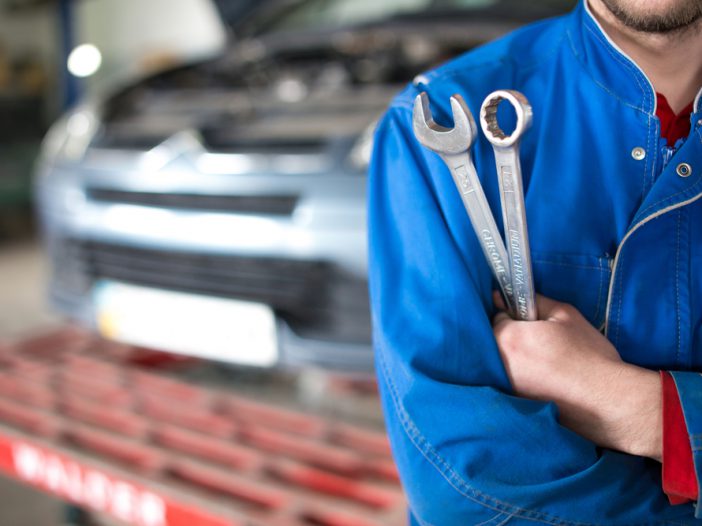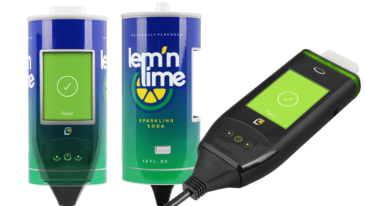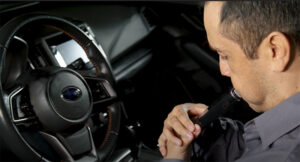
If you made the reckless decision to drink and drive, you have very likely paid some hefty penalties to the state and society in order to make amends. Typically, this involves fees, fines, alcohol education classes, and the installation of a court-ordered ignition interlock device. So, if you are reaching the end of your sentencing, you may be itching to be free of all of these constraints.
There’s no denying it, having an interlock device on your car is a hassle. You want it off as quick as possible. But first, you have to pay back your dues to society. Abide by the rules and regulations and you will have it off in no time. Naturally, you might be curious what happens when you do finally reach the end of the line; below, we will discuss everything pertaining to the removal of your ignition interlock device.
Initial Sentencing Interlock Time Requirements
During your initial sentencing, the presiding judge will study the circumstances surrounding your case and then pass adjudication. Whether or not you are required to have an interlock device depends on several factors, including:
- The state you reside in – Some states have mandatory interlock device installation for even first-time offenders.
- The severity of the DUI – Some states draw the line at .15 BAC.
- Whether this is a first time or repeat offense – Other states have mandatory interlock device installation for repeat offenders.
In addition, the specifics of your case and the supervising judge will determine the time period that you will be required to drive a vehicle with an interlock device. Once that is all determined, you are obligated to fulfill the installation requirements and prove to the state and DMV that you are doing so. If you are ordered to have the device for a year, that year begins the day after the initial installation; however, program violations can extend the duration which you will be required to have the device in your car.
Ways to Extend the Removal Period
If you want to remove the device at the originally forecasted date, then it behooves you to follow the law and avoid committing device violations. One violation is bad enough, but multiple offenses can result in a host of negative repercussions, including:
- A charge of driving on a suspended
- Additional fines
- An interlock timeline extension
- Driver’s license suspension
- Extended license suspension period
- Prison sentencing
- Vehicle confiscation
To avoid having the ignition interlock device installed for the minimum required time, it is necessary that you make a concerted effort to avoid common violations, such as:
- Failing the initial breath test – Low Cost Interlock devices are calibrated to detect alcohol at .03 BAC. If you perform a breath test and provide a sample that surpasses this threshold, you will receive a warning. Multiple warnings can turn into violations, which can result in pushing back the device removal date anywhere from 1 to 3 months. If you try to drive and provide a breath test above .08, it is an automatic violation that will result in stiff penalties.
- Failing a rolling re-test – If you have someone blow in your device on your behalf to get started and pass the test, but you then proceed to fail the rolling re-test, the device will record the sample, and you will receive a device violation.
- Missing rolling re-test – If you ignore the device when it requests a rolling re-test, it is counted as an automatic violation, which will push back the date of your device’s removal.
- Meddling with the device – If you attempt to remove the device, alter it in any way or circumvent the breath test submission, you could be hit with multiple violations, if not worse. Examples of tinkering include:
- Attempting to remove the device on your own
- Going to the mechanic and not notifying LCI about a possible vehicle and device power outage.
- Having someone else blow into the device so you can drive.
- Messing with the vehicle or the device’s wiring to pass a test
- Physically altering the device in order to leave it inoperable or only partly working.
- Taking the interlock device to an uncertified service center.
- Failure to pay – If you do not pay all the fees that are involved in your lease agreement.
- Failure to appear – If you do not make it in time for your recalibration appointment or notify them as to the reason behind your absence.
Ignition Interlock Device Removal Paperwork
Every state in the country, as well as Washington DC, has its own ignition interlock laws on the books. The duration of your interlock timeline depends on the severity of the case, whether it was a first time or repeat offense, and any violations you committed while you had the device. Once you have finished your interlock program, you can begin the process for the interlock device removal.
If you are nearing the terminus of your mandated ignition interlock device program, and you have obeyed the rules program in a manner that did not result in any extensions, you will want to fill out removal paperwork. Low Cost Interlock cannot legally remove your ignition interlock device without the proper paperwork. Depending on the state you are in, some states will automatically send you the required forms, and others will require a request for the forms. Ask your probation officer or the DMV for further information about your specifics.
Paperwork includes:
Ignition Interlock Device Installation and Removal Request (DL 925)
The DL 925 form authorizes the release of specific information about your eligibility to Low Cost Interlock. To fill this out you must provide the following information:
- Driver Information
- Driver’s license number
- Birthdate
- Last name
- First name
- Middle name
- Installer Information
- Date of request
- Request for removal
- Ignition interlock device installer name
- Installer license number
- Street address
- Contact name
- Phone number
Once this form has been signed and sent in, the mandatory actions unit (MAU) can disclose information about your status to Low Cost Interlock. According to the California DMV Ignition Interlock Device Handbook, this can include additional required steps such as:
- “Contact DMV for additional information regarding another action on the participant’s driving record.
- Provide proof of enrollment in, or completion of, a drinking driver program (DDP).
- Submit a California Insurance Proof Certificate (SR 22). The necessary installation form(s) will be determined based on the IIDP requirements.
Multiple installation forms may need to be completed and maintained in the participant’s program file.” Only after all the proper paperwork has been signed, sorted, and filed, can Low Cost Interlock begin the device removal process.
Ignition Interlock Device Removal
Once you have sent in the device removal paperwork, you can go about contacting the service center nearest to you. Per Low Cost Interlock, “Do not remove the device yourself, a trained technician must complete this to ensure you are compliant with your monitoring authority regulations. If you attempt to remove the device yourself, some states will consider this a device circumvention and you will be subject to stricter penalties including utilizing the ignition interlock for a longer period and in some jurisdictions, this is considered a Class 4 Felony.”
Take the following steps to have the device removed:
- Make sure that you meet your jurisdictional requirements for device removal and confirm that you have not received an extension to the removal date.
- Go to the Interlock Installation Locations page and type in your name, phone number, and zip code, to find the location nearest to you.
- Contact Low Cost Interlock’s 24/7 bilingual customer support team in order to schedule an appointment to remove your ignition interlock device.
- On the date of your appointment, take your vehicle to the designated Low Cost Interlock location and pay the removal fees.
- A certified professional will begin the device removal process, which takes less than 60 minutes. During this, the device will be removed from the vehicle, and your car’s electronic systems will be reset to their pre-installation condition.
Driving Safely
Upon the removal of your device, you will once more be free and no longer burdened by the presence of the device in your vehicle. However, now the responsibility is back in your hands to drive safely and to avoid repeating a mistake. Studies on DUI recidivism show that drivers who have been found guilty of a past DUI are far more likely to repeat that offense. A 2010 study concluded,
On average, the annual rate of a subsequent violation was 7.15 times higher among drivers with 1 prior than among drivers with no prior violations, which means that the rate of a subsequent violation was increased 615% by the first violation. Furthermore, we found that, compared with drivers with no prior violation, the rate of committing a new violation was 10.6 times greater for drivers with 2 prior violations and 14.9 times greater for drivers with 3 or more prior violations. Remarkably, the second and third or higher prior violations still increased the rate of a subsequent violation, but not as dramatically as did the first; the second prior violation increased the rate of recidivism by 48% over the first, and the third or higher by 42% over the second.
Knowing this, it is essential that you take all the proper precautions to avoid further violations, not only for your own well-being but for the innocent strangers who share the road with you. In order to avoid another DUI consider taking the following steps:
- Give up drinking – If you find that you have trouble moderating your drinking habits, then it may be wise for both your health and wallet to give it up. Regular alcohol consumption is an expensive habit on its own, without all the additional costs of violating laws while under the influence.
- Use a ride share service – These days, with Uber and Lyft, there is no excuse for drinking and driving as ride share applications make it so you can hire a sober driver anywhere at any time. A $15 cab fare is infinitely cheaper than just the initial $1,000 to $5,000 DUI fine.
- Enlist a designated driver – If you are going out with a group, ensure that at least one person is being responsible that night and is acting as the sober driver. It is critical that this person understands the expectations and that you trust them to uphold their promise.
- Use public transportation – If you have busses, trains, or subways near you, then take full advantage of them. They are cheap and easy ways to get home safely without having to worry about a sober driver.
- You can keep the interlock device even after your mandated period – If you feel like you do not have the mental fortitude to avoid driving under the influence, you can continue to lease your device. As such the monitoring reports will be sent to you and not the government.
- Book a hotel or sleepover – If you are going into the city or somewhere that is a good distance away, consider booking a hotel or arranging to stay on a friend’s couch that is nearby.
Low Cost Interlock
LCI wants to make your time with the interlock device goes as seamlessly as possible. From installation to removal, we are here for you and want to help you avoid any further missteps. The installation and removal processes should not take any longer than an hour. Our goal is to get you in and out with no hassle. So, if you have any questions or concerns, be sure to contact us right away!
Sources:
National Conference of State Legislatures. Drunken Driving. http://www.ncsl.org/research/transportation/drunken-driving.aspx
Occupational Health and Safety. California’s Ignition Interlock Law Takes Effect Jan. 1. (2018). https://ohsonline.com/articles/2018/12/21/ignition-interlock-law-takes-effect.aspx
California DMV. Ignition Interlock Device Program Handbook. https://www.dmv.ca.gov/portal/wcm/connect/a740a869-12f8-4a1c-a195-6a042dc4010c/DL+919+N5-2015+WWW.PDF?MOD=AJPERES
NCBI. Rauch, W. Risk of Alcohol-Impaired Driving Recidivism Among First Offenders and Multiple Offenders. https://www.ncbi.nlm.nih.gov/pmc/articles/PMC2853607/


